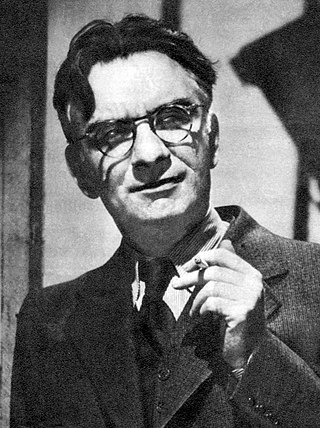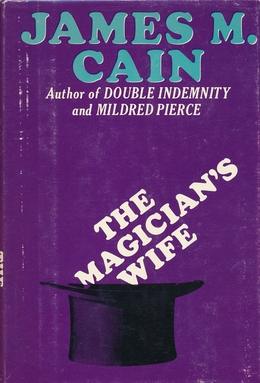Publication Background
In 1925 Cain emerged as a “humorist and a master of American dialect” in satiric pieces for The American Mercury that took the form of dialogues and sketches. [5] [6] Skilled in reproducing both urban and rural vernaculars, Cain was hired by New York World in 1928 to write a regular column of dialogues depicting working-class denizens of “Bender Street”, an imaginary New York City neighborhood. [7] From 1929 to 1931, Cain wrote sketches concerning various characters and locales for the Mercury and the World that were widely read in New York, Publishers Houghton Mifflin and Alfred A. Knopf expressed interest in his work. [8]
In 1930 Knopf assembled a collection of Cain's sketches for publication. Most of the pieces originally appeared in The American Mercury, but were retitled in the Knopf publication to comport with the government theme. Cain wrote four additional sketches for the book. His 1929 short story “The Taking of Montfaucon” based on his experience in France during World War I was also included. [9] [10] [11]
The collection brought Cain to the attention of the Hollywood studios. He was hired as a screenwriter for Paramount Pictures, and in 1931 he left New York for California. [12] [13] Biographer David Madden comments on the overall effect of Our Government:
Almost without exception the dialogues exaggerate for satirical effect, so that public officials and members of the public who figure in them [appear] as irresponsible, self-deluded, moronic yokels. Given what Cain shows us, the miracle of democracy is that it works at all; but Cain’s final point is that it does work. The dialect and the colloquialisms are authentic and demonstrate his ability to listen carefully…if these dialogues fail to justify Cain’s claims, to demonstrate his intentions, and to instruct, they certainly entertain. [14]

Mildred Pierce is a psychological drama by James M. Cain published by Alfred A. Knopf in 1941.

James Mallahan Cain was an American novelist, journalist and screenwriter. He is widely regarded as a progenitor of the hardboiled school of American crime fiction.

The Postman Always Rings Twice is a 1934 crime novel by American writer James M. Cain. The novel was successful and notorious upon publication. It is considered one of the most outstanding crime novels of the 20th century. The novel's mix of sexuality and violence was startling in its time and caused it to be banned in Boston.
"The Baby in the Icebox" is a 1932 short story by James M. Cain and the first of his many works set in California during the Great Depression.
“Pastorale” is a short story written by James M. Cain and published in 1927 by editor H. L. Mencken in The American Mercury. Written in the Ring Lardner style, the tale is told in a first-person narrative, delivered in the dialect of a resident of rural America. Both the point-of-view and the use of colloquial dialect for his protagonists, fully established in “Pastorale”, would be applied in many of Cain’s novels.

Three of a Kind is a collection of three novellas by James M. Cain, published by Alfred A. Knopf in 1943. Each originally appeared as serials in magazines during the 1930s. The collection includes Double Indemnity, first published in 1935 as a serial for Liberty magazine; Career in C Major, originally entitled "Two Can Sing" when it appeared in The American Magazine in 1938; and The Embezzler, appearing in Liberty as "Money and the Woman", also in 1938.

Serenade is a novel by James M. Cain published in 1938 by Alfred A. Knopf. and one of four Cain novels to feature opera as a plot device. Loosely based on Bizet's Carmen, the story explores the sources of artistic development, in particular the role played by sexual orientation in the development of artistic talent.
The Embezzler is a 1938 short novel by James M. Cain. The work first appeared as a serial in Liberty magazine in 1940 under the title Money and the Woman. In 1943, Alfred A. Knopf published the work as The Embezzler in a collection of novellas by Cain entitled Three of a Kind.

Love's Lovely Counterfeit is a hard-boiled short novel by James M. Cain published by Alfred A. Knopf in 1942. The story is set in a Midwestern town where rival gangsters struggle to maintain control of their criminal enterprises. The work is one of only three of Cain's novels told from the third-person point-of-view.
The Taking of Montfaucon is a short story by James M. Cain first published in H. L. Mencken’s The American Mercury in 1929.
Crashing the Gates is a play written by James M. Cain and produced by Philip Goodman in 1926. The play’s plot dramatizes the labor struggles in the West Virginia coal mines of the 1920s and the evangelical Christian fundamentalism prevalent among poor whites in the region. The tragic denouement anticipates the exposure of pseudo-clericism in Sinclair Lewis’ Elmer Gantry (1927).
The Postman Always Rings Twice is a play by James M. Cain, based on his best-selling 1934 novel The Postman Always Rings Twice. The work was first performed at the Lyceum Theatre in New York City in 1936. The play saw a brief revival in 1953.

Sinful Woman is a detective novel by James M. Cain that appeared originally as a paperback in 1947 by Avon publishers. Sinful Woman was the most commercially successful of three paperbacks Cain wrote for Avon in the late 1940s and early 1950s.

Galatea is a romance novel by James M. Cain published by Alfred A. Knopf in 1953. The story alludes to the mythological Galatea in which the sculptor Pygmalion falls in love with the ivory figure of a woman he has crafted. In Cain’s modernized version of the Greek legend, an overweight woman is transfigured through a program of weight reduction into a goddess-like beauty.

The Moth is a novel by James M. Cain published in 1948 by Alfred A. Knopf. The work is the last of Cain’s four novels to feature opera as a central element of the story; the others are Serenade (1937), Mildred Pierce (1941) and Career in C Major (1943) At over three-hundred pages, The Moth is Cain’s “most personal, most ambitious and longest book” in his oeuvre, attempting to convey a “broad, social landscape” of America in the 1930s.

Mignon is a historical novel by James M. Cain published by the Dial Press in 1962. Along with Past All Dishonor (1946), Mignon is one of Cain’s two historical novels set during the American Civil War.

The Magician's Wife is a novel by James M. Cain published in 1965 by Dial Press.

Cain X 3 is a collection of three previously published novels by James M. Cain, reissued in 1969 by Alfred A. Knopf, with an introduction by Tom Wolfe.

The Institute is a novel by James M. Cain published in 1976 by Mason-Charter. The Institute is a story of academia and high finance set in the community of College Park, Maryland concerning members of the Washington, D. C. political establishment.

Jealous Woman is a mystery novel by James M. Cain published in 1950 by Avon.
This page is based on this
Wikipedia article Text is available under the
CC BY-SA 4.0 license; additional terms may apply.
Images, videos and audio are available under their respective licenses.













